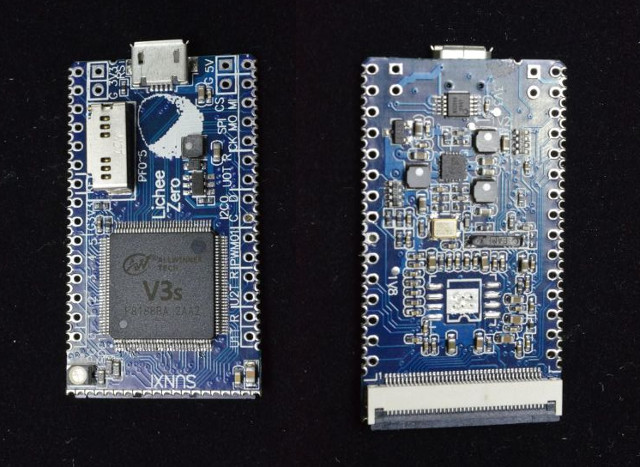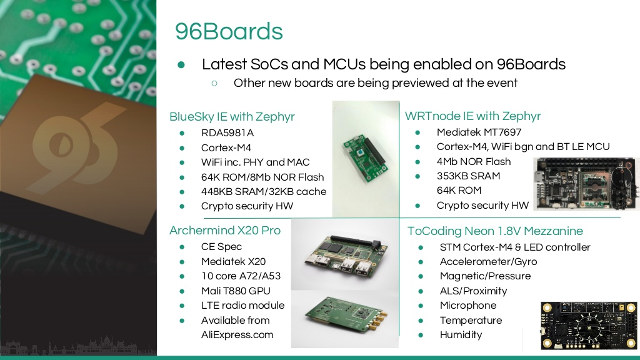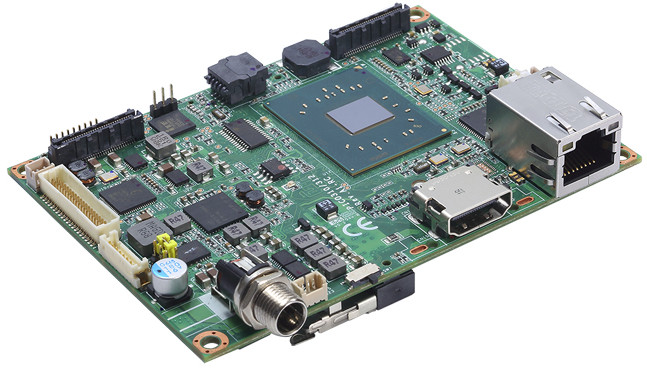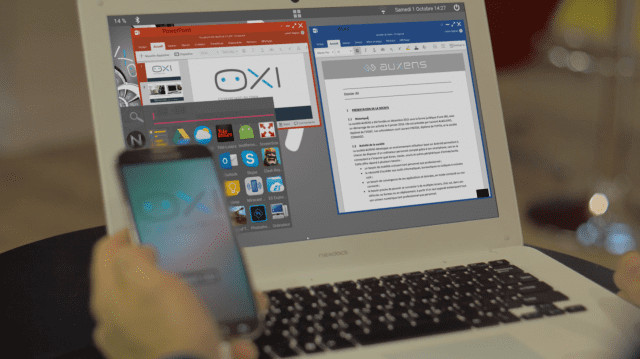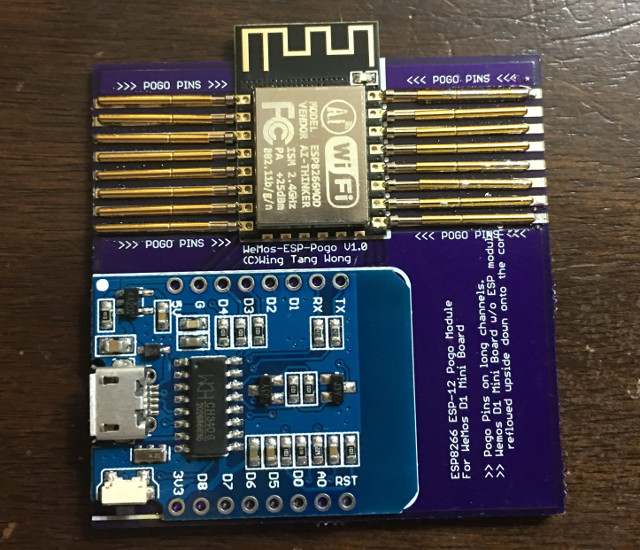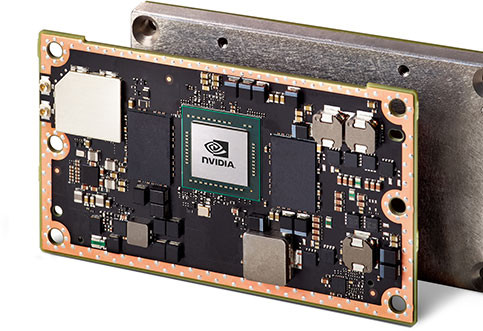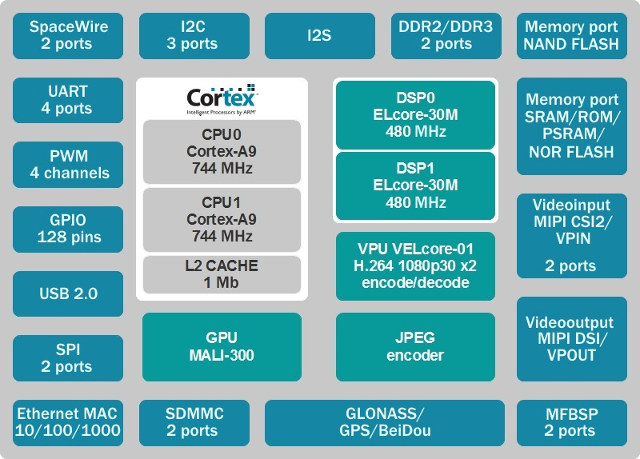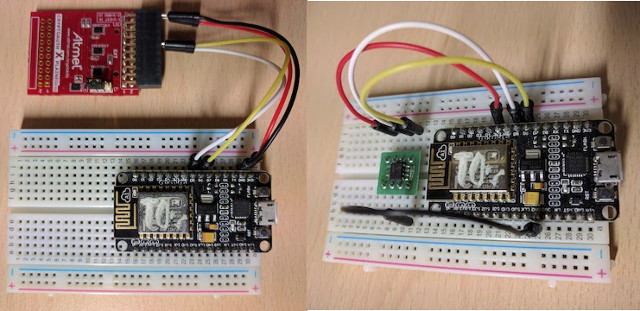We’ve already covered LicheePi One board powered by Allwinner A13 processor, but it was not for sale out of China, and the developers are now back with LicheePi Zero board/module, slightly bigger than an SD card, featuring Allwinner V3s processor, and offered for as low as $6, or $8 with WiFi via an Indiegogo campaign. LicheePi Zero specifications: SoC – Allwinner V3s ARM Cortex A7 processor @ up to 1.2 GHz with an ARM Mali-400 GPU, 512Mbit (64MB) DDR2 on-chip Storage – micro SD card slot, SPI flash (not 100% clear if it will be populated when shipped to backers) Display – FPC40 RGB Connector with support for 800×480 RGB LCD Audio – Audio codec USB – micro USB OTG port Expansion 2x 15 headers with 2.54mm pitch, breadboard friendly with GPIOs, 2x UART, 1x SPI, 2x I2C,ADC, 1x PWM 2x 30 half-holes with 1.27mm pitch with OTG USB,MIPI CSI,EPHY,RGB […]
New 96Boards IoT Edition Boards Showcased at Linaro Connect 2017: BlueSky IE and WRTNode IE
Linaro Connect Budapest 2017 is taking place this week in Hungary, and during George Grey – Linaro CEO – keynote, he provided a status updates for the Linaro group, addressed some of Linaro’s criticisms from members and the community, and unveiled two upcoming boards compliant with 96Boards IoT edition both running Zephyr OS, and adding to BLE Carbon board announced last year. The first board is BlueSky IE board with the following key specifications: SoC – RDA Micro RDA5981A ARM Cortex-M4 Wireless MCU with 64KB ROM, and 32KB cache System Memory – 485KB SRAM. It’s unclear if that’s only the on-chip SRAM, and there’s also some external PSRAM added. Storage – 8Mb NOR flash 802.11 b / g / n HT20 / 40 mode Connectivity – 802.11 b/g/n WiFi with support for HT20 / 40 modes Crypto security hardware The second board is WRTnode IE: SoC – Mediatek MT7697 ARM […]
Axiomtek Introduces PICO312 Fanless Apollo Lake Pico-ITX SBC
Axiomtek has recently introduce PICO312, a fanless pico-ITX single board computer powered by either Intel Pentium N4200 quad core processor or Celeron dual code N3350 processor N3350 part of “Apollo Lake” family. The board is equipped with a SO-DIMM socket supporting up to 8GB RAM, LVDS, VGA or HDMI output, and working within -20°C to +60°C without the need for a fan, but just a heat spreader with heatsink. Axiomek PICO312 Apollo Lake Pico-ITX board specifications: SoC – Intel Pentium N4200 quad core procesoor @ up to or Celeron N3350 processor @ up to with respectively 18EU or 12 EU Intel HD Graphics Gen 9. System Memory – 1x DDR3L-1867 SO-DIMM supporting up to 8GB Storage – 1x SATA-600 port, 1x mSATA via mini PCIe slot (both on the back of the board) Video Output / Display IF 1x LVDS; 18/24-bit single/dual channel 1x HDMI (N4200 model) or 1x VGA […]
Auxens OXI Brings Windows Continuum Like Desktop Mode to Android Smartphones
Remix OS, Phoenix OS, LightBiz OS… are all Android based operating systems with desktop optimizations, but so far they mostly work on TV boxes, computers or tablets. If you want something that works on smartphones with a desktop mode while connected, your choice is more limited with solutions such as community based Maru OS, or the upcoming Remix Singularity. But there’s now a new player in town with Auxens OXI that works a little like Windows Continuum, but with modifications to the Android API. OXI is based on CyanogenMod 13.1, with work being done to switch to LineageOS 14.1, and offers a desktop-like environment for Android with support for multitasking, multi-window support with resizing, notification support, and so on. It works by connecting the smartphone to a secondary screen via MHL, DisplayPort, or Miracast to get a desktop environment, while still being able to use your phone. Apps do not […]
Need to Program Many ESP8266 Modules? This Wemos D1 mini based Pogo Jig Programming Board Could Be Useful
If you have many ESP8266 modules to flash with your own firmware this may be time-consuming, but Wing Tang Wong’s ESP8266 Pogo Jig Programming Board could greatly streamline the process, as it just hold ESP-12F module in place using pogopins, so you can go through boards quite quickly. You’ll just need to a Wemos D1 mini board without ESP-12F module to the programming board, and then place your ESP-12F module (or compatible) between the pogopin to program it through Wemos D1 mini’s micro USB port. The board is not for sale (yet?), but the EAGLE design files can be found on Github, and it should not be difficult to find a company to manufacture a few if you need it. Via OSH Park’s Blog. Jean-Luc Aufranc (CNXSoft)Jean-Luc started CNX Software in 2010 as a part-time endeavor, before quitting his job as a software engineering manager, and starting to write daily […]
NVIDIA Introduces Jetson TX2 Embedded Artificial Intelligence Computer
NVIDIA has just announced an upgrade to to their Jetson TX1 module, with Jetson TX2 “Embedded AI Computer” with Tegra X2 Parker SoC that either doubles the performance of its predecessor, or runs at more than twice the power efficiency, while drawing less than 7.5 watts of power. The company provided a comparison showing the differences between TX1 and TX2 modules. Jetson TX2 Jetson TX1 GPU NVIDIA Pascal, 256 CUDA cores NVIDIA Maxwell, 256 CUDA cores CPU HMP Dual Denver 2/2 MB L2 + Quad ARM® A57/2 MB L2 Quad ARM® A57/2 MB L2 Video 4K x 2K 60 Hz Encode (HEVC) 4K x 2K 60 Hz Decode (12-Bit Support) 4K x 2K 30 Hz Encode (HEVC) 4K x 2K 60 Hz Decode (10-Bit Support) Memory 8 GB 128 bit LPDDR4 58.3 GB/s 4 GB 64 bit LPDDR4 25.6 GB/s Display 2x DSI, 2x DP 1.2 / HDMI 2.0 / […]
Salute EL24D1: Evaluation Board with Russian Processor ELVEES 1892VM14Ya for Harsh Environments
This is a guest post by Promwad, an electronics design house with development centers in Belarus and Russia, as well as sales offices in Europe and North America. They also evaluated Baikal T1 development board previously. Engineers at Promwad Electronics Design House have got a new Russian board to experiment; it is an evaluation board Salute EL24D1 which is based upon multicore 1892VM14Ya SOC designed to be used in the Arctic and in space. Let us have a look what it is able to do. Board Salute EL24D1 is designed to investigate CPU abilities, develop and debug software. The developer, R&D center ELVEES began deliveries of Salute at the end of 2015. One of the main application areas of 1892VM14Ya is machine vision systems, processing of video and audio streaming in severe conditions, in manufacturing and in space. So the CPU is mainly aimed at the industrial sector rather than […]
Secure IoT Connectivity with NodeMCU ESP8266 Board, ATECC508A Crypto Chip, Mongoose OS, and AWS IoT
There are many examples of Internet of Things projects, but more often than not the implementation is not secure, either because the device is exposed to the Internet with minimum or no security (worst case), or a gateway (hopefully) provides secure connection to the Internet, but the communication between sensor nodes and the gateway in the local network is not secure, due to memory limitation of the nodes, for example it might be challenging to implement security on ESP8266. Mongoose OS is an open source operating system for the Internet of Things developed by Cesanta working on ESP32, ESP8266, STM32, and TI CC3200, and the developers have demonstrated a secure solution with Mongoose OS running on ESP8266 connecting over a TLS connection to AWS IoT (Amazon Web Service IoT) and using TLS credentials stored in Microchip ATECC508A CryptoAuthentication Device. The addition of ATECC508 chip either using “XplainedPro extension board for […]


